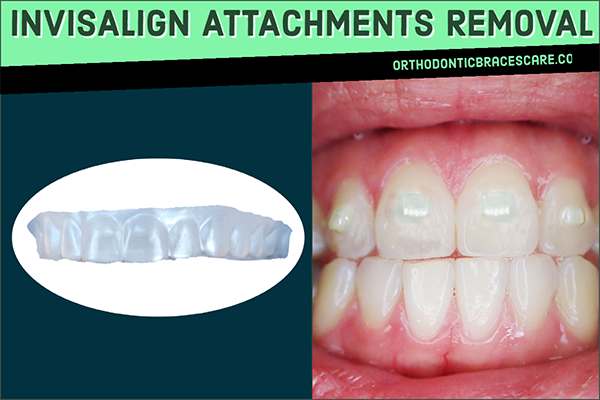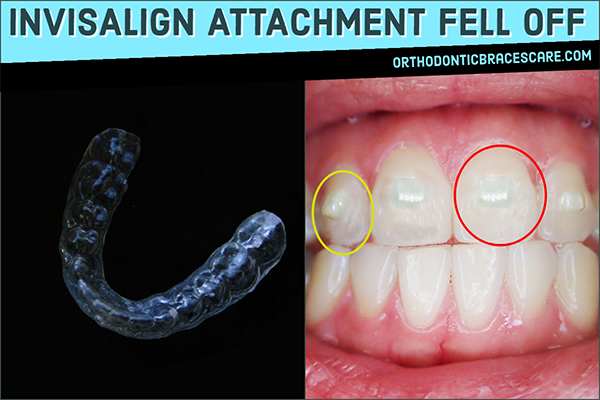If you’re considering invisible braces (Invisalign), you may be wondering if you need to shave your teeth first. Is it normal to shave teeth for Invisalign?
Shaving teeth for Invisalign is sometimes necessary to create space in the jaw to move teeth in the desired position. This is usually done when your jaw doesn’t have enough room for your teeth to align properly, especially for overcrowed or overlapped teeth.
In some cases, your dentist or orthodontist may recommend shaving down a tooth or two to help the aligners fit better and avoid irritation.
In this article, you’ll know why you might need teeth shaving, if it can hurt you, what are the side effects and why it can be needed for crowded teeth.
What is teeth shaving for Invisalign?
Teeth shaving is the process of removing a thin layer of enamel from your teeth. This can be done for cosmetic reasons, to improve the appearance of your teeth, or for functional reasons, to improve the fit of your dentures.
So, what is teeth shaving for Invisalign?
Teeth shaving for Invisalign is also known as an interproximal reduction. This is a procedure where the dentist or orthodontist removes a small amount of tooth enamel from the interproximal surface. This may be necessary when your teeth are overcrowded or when there is not enough room in your jaw to align teeth correctly.
This simple procedure can help fit aligners more snugly on the teeth.
Do you need to shave your teeth for Invisalign?
An orthodontist doesn’t shave your teeth for Invisalign in all cases. However, teeth shaving is usually necessary when you have overcrowded teeth. If you don’t have enough space in your jaw to align the teeth properly, orthodontists might shave your teeth to create space in the jaw to move teeth in the desired position.
If they decide to shave your teeth for Invisalign, you won’t need to remove your teeth. Your dentist will be able to determine if it is necessary for your treatment.
Is it okay to shave your teeth for Invisalign?
Teeth shaving for Invisalign is a safe and effective way to create space in your mouth for teeth alignment. It doesn’t damage your teeth and also don’t cause any problem such as gum disease or tooth decay in the future.
Moreover, it is a minor procedure that doesn’t require anesthesia or sedation, and it’s typically not painful.
If you’re concerned about the procedure, talk to your orthodontist about your options and what’s best for you.
Why is teeth shaving necessary to fix overcrowded teeth?
Teeth shaving or Interproximal reduction is necessary to fix overcrowded teeth because it can help create space in your dental arch for teeth alignment. It is a minor procedure that involves the removal of very small amounts of tooth structure from the sides of your teeth.
When your teeth are crowded, it means that there is not enough space in your dental arch for all of your teeth. So, to rearrange the teeth and make them straighter, we’ll need to create space in the dental arch.
An example of this would be if you had a lot of bikes in your garage, and you needed to rearrange them so that they all fit. You would need to create space by moving some of the bikes out of the way.
The same is true for teeth. We need to create space so that we can move the teeth into the correct position.
That’s the reason you need to get your teeth extracted for braces or aligners. However, teeth slicing or shaving can be used to avoid needing to have teeth pulled.
How much teeth is necessary to shave to fix overcrowded teeth?
The amount of teeth shaving or interproximal reduction for crowding should not exceed 1 mm for molar teeth and 0.5 mm for front teeth. This will help to ensure that the teeth are not damaged and that the smile looks natural. However, it can vary depending on the severity of the crowding and the amount of space needed to align your teeth.
Teeth shaving or IPR is only necessary when the crowding is severe enough to cause functional problems or esthetic concerns. For mild to moderate crowding, IPR may not be necessary.
What are the benefits of teeth shaving for Invisalign?
The benefits of teeth shaving include creating space for teeth alignment. This allows your Invisalign aligners to move your teeth to the desired position to fix the crowding,
This procedure also improves the function of your teeth and helps improve the appearance of your smile and mouth, as well as makes it easier to clean your teeth.
It can also help reduce the risk of tooth decay and gum disease.
Another major benefit of teeth shaving or enamel slicing is it might take the place of the necessity for tooth extraction. So, if the orthodontist needs to create small spaces between teeth, shaving can do the work.
What are the risks of shaving teeth for Invisalign?
The risks of teeth shaving or Interdental reduction are minimal. Some people may experience temporary sensitivity or discomfort after the procedure, but this should resolve within a few days. In rare cases, there is a chance that too much tooth structure could be removed, which could result in permanent sensitivity or tooth damage.
Studies also suggest that interproximal enamel reduction is a safe and effective way to create the space needed for teeth alignment.
However, this procedure may not be good for you if you have a preexisting dental condition such as tooth decay or gum disease.
If you are considering Invisalign to treat your overcrowding, be sure to discuss the procedure with your dentist to ensure that it is the best treatment option for you.
How does the dentist shave your teeth for Invisalign?
Shaving teeth for Invisalign is generally a very quick and easy procedure. Orthodontists will suggest the specific amount of enamel removal based on your situation and treatment plan. They use a variety of instruments to shave teeth for Invisalign, including a very thin diamond strip and a diamond disk. They will often use little to no pain in the process.
The diamond strip or abrasive strip is a very common instrument that is used to shave teeth for Invisalign. This type of instrument is very thin and made up of diamond particles. It is used to remove a very small amount of enamel from the teeth.
In order to remove the enamel with a diamond strip or abrasive strip, they will hold the strips with their hands and slide the instrument back and forth.
A diamond disk is another type of instrument that is also made up of diamond particles. However, it is a bit thicker than the diamond strip.
If the orthodontists use a diamond disk or bur, they will also use a small hand-held tool or dental drill (a dental handpiece) and attach the bur to it and then gently shave down the tooth (or teeth).
Finally, your dentist or orthodontist will fit you for your Invisalign aligners. If you have any questions or concerns about shaving teeth for Invisalign, be sure to ask your dentist or orthodontist. They can help you understand the procedure and what to expect.
How much do teeth shaving/interproximal reduction cost?
The cost of teeth shaving/interproximal reduction can vary depending on a few factors, such as the severity of your crowding, the number of teeth that need to be shaved, and your location. In general, the procedure can range from $50 to $300.
To get an accurate estimate of the cost of teeth shaving for Invisalign in your specific case, be sure to consult with your dentist or orthodontist. They will be able to give you a more accurate estimate based on your individual treatment plan.
Does shaving teeth for Invisalign hurt?
When it comes to Invisalign, there are a lot of things that people want to know. So, it’s no surprise that one of the most common questions we get is whether or not shaving teeth for Invisalign hurts.
Shaving teeth for Invisalign does not hurt. The process is actually quite simple and easy. In fact, the orthodontist doesn’t numb your gums and tooth area before starting the procedure, since you don’t feel any pain or discomfort.
However, some people report feeling a little bit of discomfort like tooth sensitivity when their teeth are being shaved down, while others don’t feel anything at all.
If you’re worried about the pain, talk to your dentist or orthodontist before getting started with Invisalign. They can help you determine if you’re a good candidate for the treatment and give you an idea of what to expect.
Should I let my orthodontist shave my teeth?
You should let your orthodontist shave your teeth if they recommend it. They are the experts and know what’s best for your teeth. They won’t shave your teeth unless it’s required for the treatment purpose and your benefit.
If you’re not sure about the procedure, you can always ask your orthodontist about the risks and benefits of teeth shaving. They will be able to help you make the best decision for your smile.
Do dentists shave teeth after Invisalign?
Dentists do not shave teeth after Invisalign teeth shaving is done during the treatment with Invisalign to create room for teeth for their better alignment. So, it’s not required to have teeth shaved after Invisalign.
Side effects of teeth shaving for Invisalign
Enamel slicing or teeth shaving side effects are usually mild and temporary. They may include:
Tooth sensitivity
You may experience increased tooth sensitivity after the procedure. This should go away within a few days.
Gum soreness
You may also experience some gum soreness after the procedure. This, too, should go away within a few days. However, if you have preexisting gum diseases, it may cause more problems.
Temporary discomfort
Some people may also experience temporary discomfort after the procedure. This is usually due to the fact that your teeth are moving and adjusting to the new positions.
In rare cases, people may experience more severe side effects such as:
Bleeding
In rare cases, people may experience bleeding after the procedure. Make sure you inform your dentist about it.
Infection
There is also a small risk of infection after the procedure. Be sure to follow your dentist’s instructions for care after the procedure to reduce your risk of infection.
Allergic reaction
In rare cases, people may have an allergic reaction to the materials used during the procedure. Be sure to let your dentist know if you have any allergies before the procedure.
As with any medical procedure, there are risks involved. Be sure to discuss the risks and benefits of the procedure with your dentist before you decide to proceed.
However, teeth shaving is usually a safe and simple procedure. And, orthodontists are experts in this field. So, you don’t need to worry much if your orthodontist recommends it.
Conclusion
Teeth shaving for Invisalign is a minor procedure that can help create space for teeth alignment and help straighten your teeth. It is a safe and effective way to treat overcrowded teeth without having the need for tooth extraction. If you’re considering Invisalign, talk to your orthodontist about whether or not teeth shaving will be necessary for your treatment.

Dr. Pallab Kishore, MS in Orthodontics and owner of Orthodontic Braces Care, shares expert tips on braces, aligners, and oral health from 10+ years of experience.


